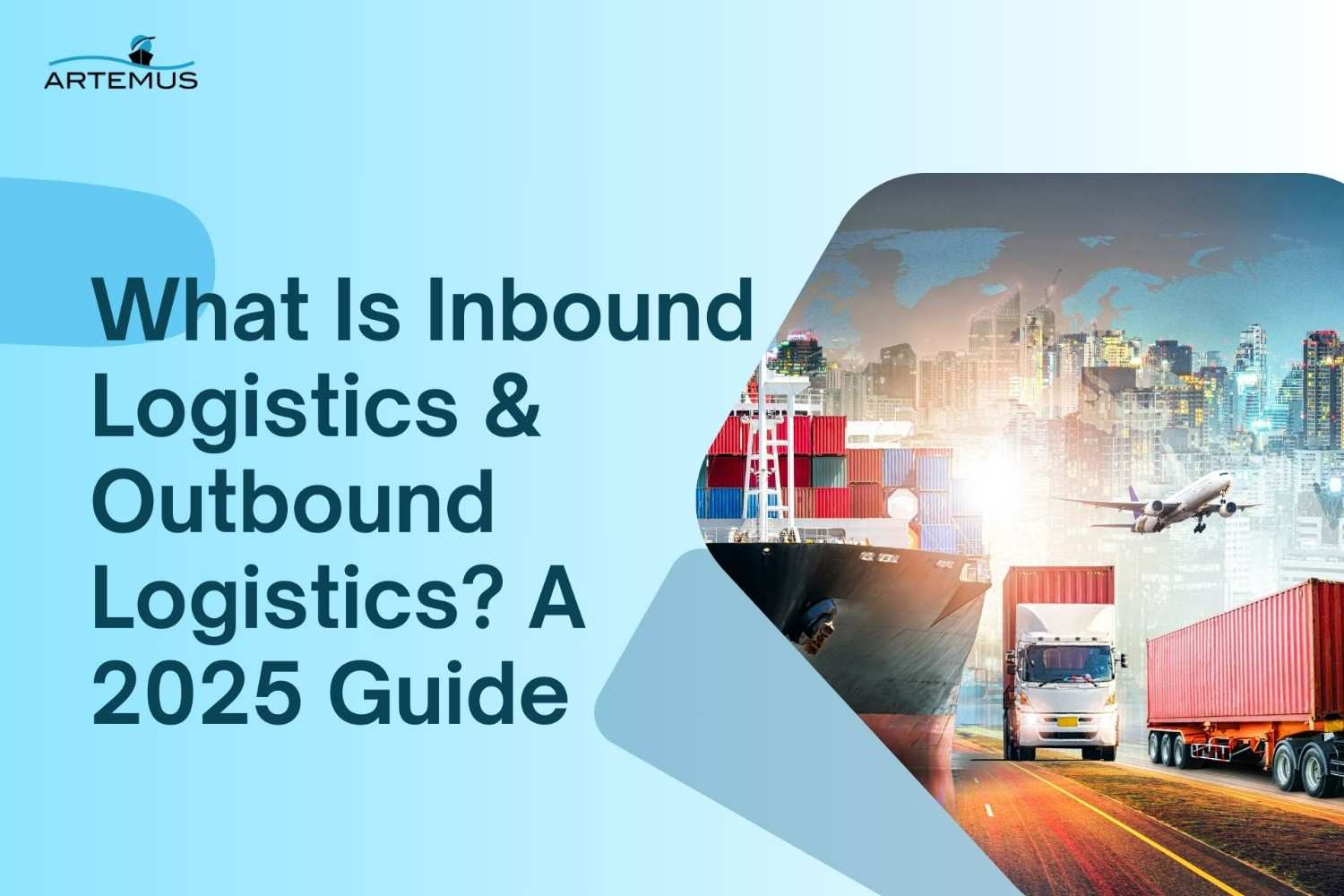
What Is Inbound Logistics & Outbound Logistics? A 2025 Guide
In the dynamic world of supply chain management, understanding the nuances of inbound and outbound logistics is crucial for operational
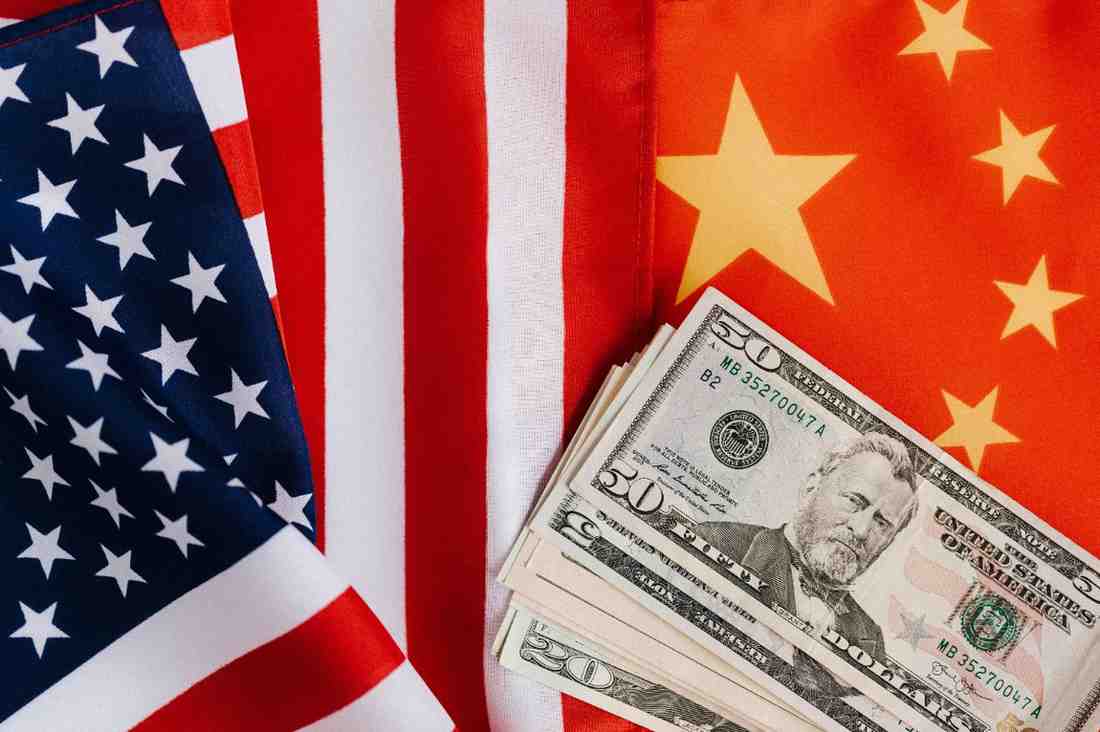
Shipping goods across international borders is a critical component of global trade, enabling businesses and consumers to access a diverse range of products and materials.
The efficient transportation of goods between major economic hubs, such as China and the USA, plays a vital role in fostering economic growth and development.
Artemus Transportation Solutions provides comprehensive customs compliance support for importers, offering software solutions to address the requirements of the Importer Security Filing (ISF) and Automated Manifest System (AMS), ensuring seamless compliance with U.S. customs regulations.
Table Of Contents
There are several shipping methods available for shipping from China to the USA, each with its own advantages and disadvantages. Here is a detailed breakdown of the three main methods:
Express shipping is the fastest method, taking 1-5 days. It is also the most expensive option. This method is ideal for small, time-sensitive shipments and high-value goods. However, it is not practical for large or heavy shipments due to the high cost based on the weight and volume of the goods.
Air freight is a faster method, taking 2-15 days. It is more cost-effective than express shipping but less expensive than sea freight. This method is suitable for small to medium-sized shipments and high-value goods. It is not practical for large or heavy shipments due to the cost being based on the weight and volume of the goods.
Sea freight is the slowest method, taking 15-40 days. It is the most cost-effective option for large consignments. This approach is perfect for goods that are either high in value or time-sensitive. However, it may not be suitable for time-sensitive shipments due to the longer transit times.
Related: Freight Forwarders Arrange Transportation Only By Ocean Shipping
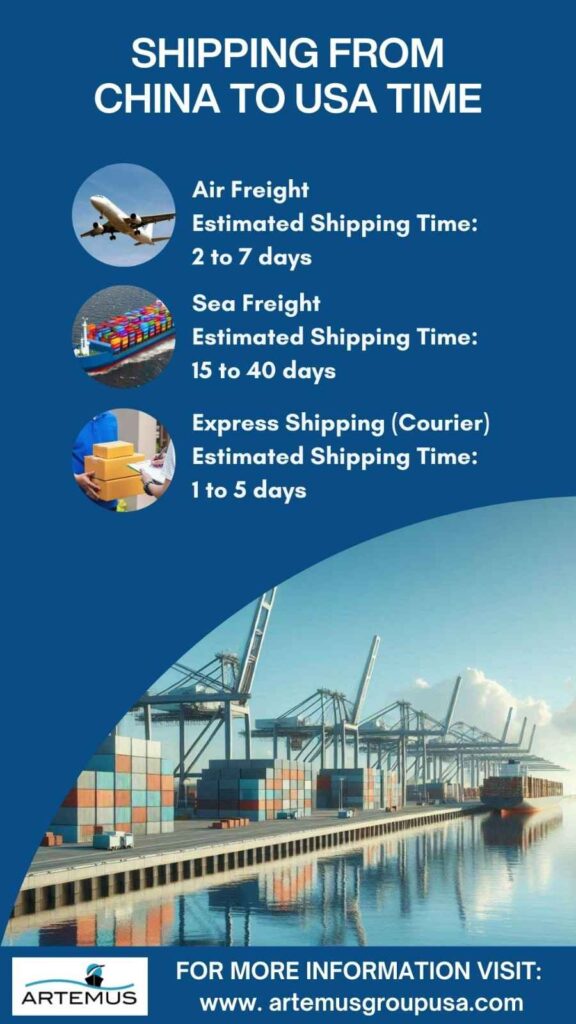
When planning to import goods from China to the USA, understanding the timeframes involved is crucial for effective logistics and supply chain management. The shipping time can vary significantly based on the chosen method, the specific routes, and other influencing factors.
Here, we’ll break down the estimated shipping times for the main methods of transportation and discuss the factors that can affect these timelines.
Estimated Shipping Time: 2 to 7 days
Air freight is the fastest shipping option available, typically taking between 2 to 7 days to reach the USA from China.This approach is perfect for goods that are either high in value or time-sensitive. The major steps in air freight include:
Factors Affecting Air Freight Time:
Estimated Shipping Time: 15 to 40 days
Sea freight is a more economical option compared to air freight, but it takes significantly longer. The shipping time can vary from 15 to 40 days, depending on the particular ports and the chosen shipping route. The process includes:
Factors Affecting Sea Freight Time:
Estimated Shipping Time: 1 to 5 days
Courier services provided by companies like DHL, FedEx, and UPS offer the fastest shipping times, ranging from 1 to 5 days. This option is ideal for urgent documents and small parcels. The process is streamlined with integrated logistics and tracking.
Factors Affecting Express Shipping Time:
Related: What Is Ocean Freight? Everything You Need To Know
Several key documents are required to ensure a smooth and efficient process when shipping goods from China to the USA. Here are the main documents involved:
Related: How Long Does Sea Freight Take From China To USA?
Shipping goods across international borders requires compliance with various customs and import regulations to ensure smooth clearance and avoid potential issues. Here are the main regulations and requirements for shipping from China to the USA:
Related: How Long Does Sea Cargo Take? What To Expect
When planning to ship goods from China to the USA, it’s essential to consider the various costs involved in the shipping process. Understanding these costs is crucial for budgeting and optimizing your logistics operations.
Here’s an overview of the primary expenses associated with shipping from China to the USA, along with approximate costs.
Freight charges constitute a significant portion of the total shipping cost and depend on several factors, including:
Approximate Costs:
Importing goods into the USA from China incurs customs duties, taxes, and other fees, including:
Approximate Costs:
Various documentation and handling fees may apply throughout the shipping process, including:
Approximate Costs:
Related: What Does Customs Clearance Completed Mean? Key Takeaways
Shipping goods from the USA to China involves navigating various maritime routes that connect major ports on both sides of the Pacific Ocean. Understanding these shipping routes is crucial for exporters to plan efficient and cost-effective transportation of their cargo.
Here’s an overview of the primary shipping routes from the USA to China, along with key ports and considerations.
Related: How To Import A Car From Japan To USA? A 7-Step Process
The most cost-effective shipping option from China to the USA is sea freight, especially for large or heavy shipments. Full Container Load (FCL) and Less than Container Load (LCL) are common choices, with LCL being ideal for smaller shipments that don’t require a full container. Though sea freight is slower—taking around 20 to 40 days—it’s significantly cheaper than air freight for bulk goods.
For smaller, lightweight shipments, economy courier services like ePacket or China Post offer affordable rates with reasonable delivery times. Additionally, working with freight forwarders to consolidate shipments can help lower costs. Planning shipments well in advance and choosing flexible delivery schedules can also reduce expenses.
Related: How Long Does Sea Freight Take From China To USA?
Navigating the logistics of shipping goods from China to the USA can be complex, but partnering with a reliable freight forwarder can streamline the process and ensure smooth operations.
Here’s a guide on how to choose and work with a freight forwarder for shipping from China to the USA:
Start by researching freight forwarders with experience in China-USA shipping. Seek out companies with a solid track record, favorable customer reviews, and specialized expertise in your industry.
Assess the variety of services provided by each freight forwarder. Consider factors such as transportation modes (air, sea, rail), customs clearance assistance, warehousing options, and additional value-added services.
Ensure that the freight forwarder is properly licensed and accredited by relevant authorities, such as the Federal Maritime Commission (FMC) in the USA and the China International Freight Forwarders Association (CIFA) in China.
Obtain quotes from multiple freight forwarders and compare costs based on shipping methods, transit times, and service levels. Be sure to inquire about any hidden fees or surcharges to avoid unexpected expenses.
Verify the insurance coverage offered by each freight forwarder to protect your cargo against loss, damage, or theft during transit. Ensure that the coverage meets your specific needs and risk tolerance.
Choose a freight forwarder that provides responsive and reliable customer support. Effective communication is essential for addressing concerns, tracking shipments, and resolving issues promptly.
Confirm that the freight forwarder has in-depth knowledge of customs regulations and procedures for both China and the USA. They should assist with proper documentation, tariff classification, and compliance with import/export laws.
Opt for a freight forwarder that utilizes advanced technology for shipment tracking and management. Having access to live updates on the location and status of your cargo enables you to stay well-informed and take proactive measures.
Before finalizing the partnership, discuss and document all terms and expectations, including pricing, payment terms, delivery schedules, and responsibilities of both parties.
Ensure consistent communication with your freight forwarder during every stage of the shipping process. Provide necessary updates on shipment volumes, changes in inventory, or any other relevant information to facilitate smooth operations.
Related: How Much Does It Cost To Become A Freight Broker In 2024
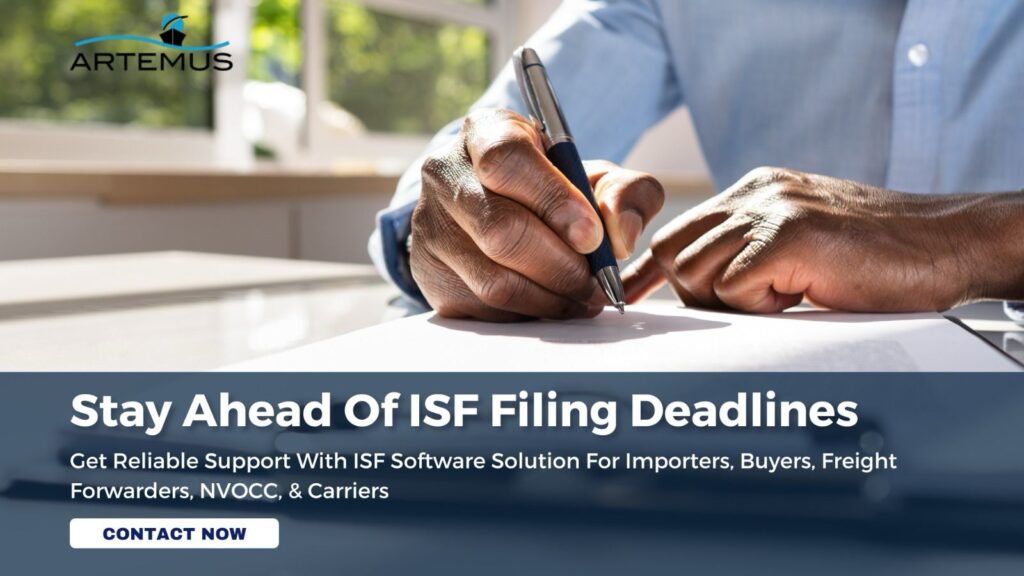
Artemus Transportation Solution offers a comprehensive ISF (Importer Security Filing) and AMS (Automated Manifest System) software solution designed to streamline customs compliance support for businesses involved in shipping from China to the USA.
With its advanced software platform, Artemus simplifies the process of filing mandatory ISF and AMS documentation, ensuring adherence to regulatory requirements and minimizing the risk of penalties or delays.
Related: Freight Broker License Costs: The Price Of Entry In 2024
The cost to ship from China to the USA varies depending on the mode of transport chosen and the final destination of the goods. Here are some estimates:
The shipping time from China to the USA by sea varies depending on the route and port. Here are some estimates:
Winsky Freight is considered one of the top freight forwarders from China to the USA, offering competitive rates, reliable services, and expertise in customs clearance and logistics.
Yes, China is allowed to ship goods to the USA, provided all customs regulations, import duties, and compliance requirements are met.
Shipping costs per kg from China vary based on the shipping method (air, sea, or courier), destination, and weight but typically range from $5 to $10 for air freight.
To ship cheaply from China, opt for sea freight for large shipments, consolidate packages, and work with freight forwarders for better rates.
Sea shipping from China to the USA usually takes 20 to 40 days, depending on the port of origin, destination, and shipping route.
Common sea routes from China to the USA pass through the Pacific Ocean, entering major U.S. ports like Los Angeles, Long Beach, or New York.
Yes, you may need to pay customs duties and taxes based on the product type, value, and applicable import regulations.
Import duties from China to the USA vary depending on the product’s HS code and classification. Some goods may also be subject to additional tariffs.
Customs clearance from China to the USA typically takes 1 to 3 days but can be longer if there are documentation issues or inspections.
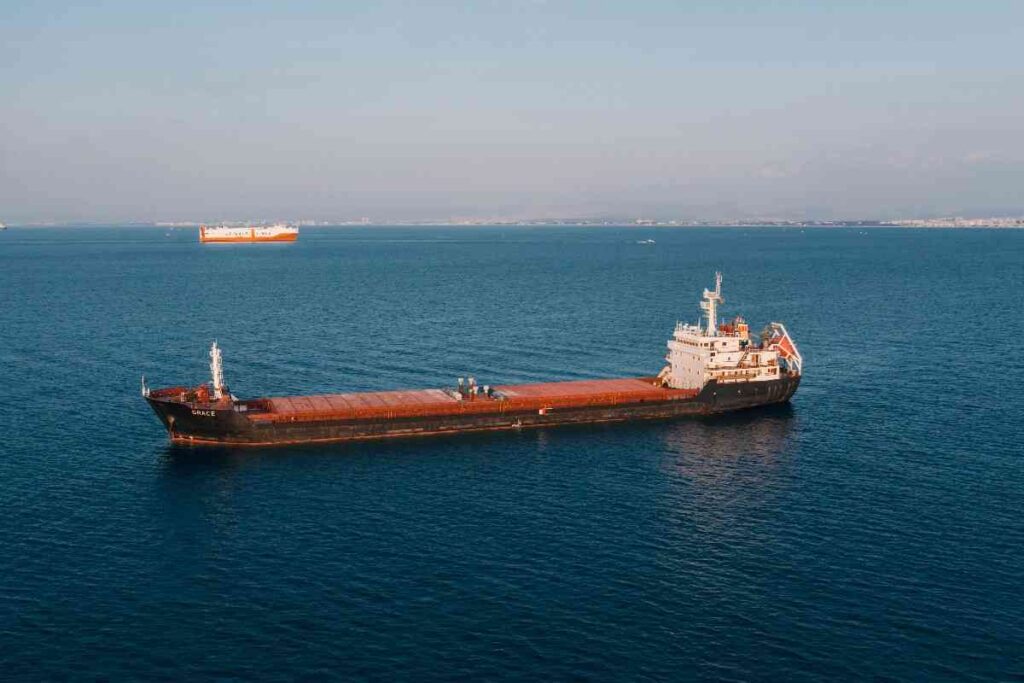
Shipping from China to the USA is a vital component of global trade, playing a crucial role in the economic relationship between the two nations. The efficient transportation of goods between these two major players in global trade enables businesses to access a wide range of products and materials, fostering economic growth and development.
Related: Top 10 Items Exported From India To USA: A 2024 List

In the dynamic world of supply chain management, understanding the nuances of inbound and outbound logistics is crucial for operational

In today’s interconnected world, businesses rely heavily on global trade to expand their markets, access new resources, and drive growth.
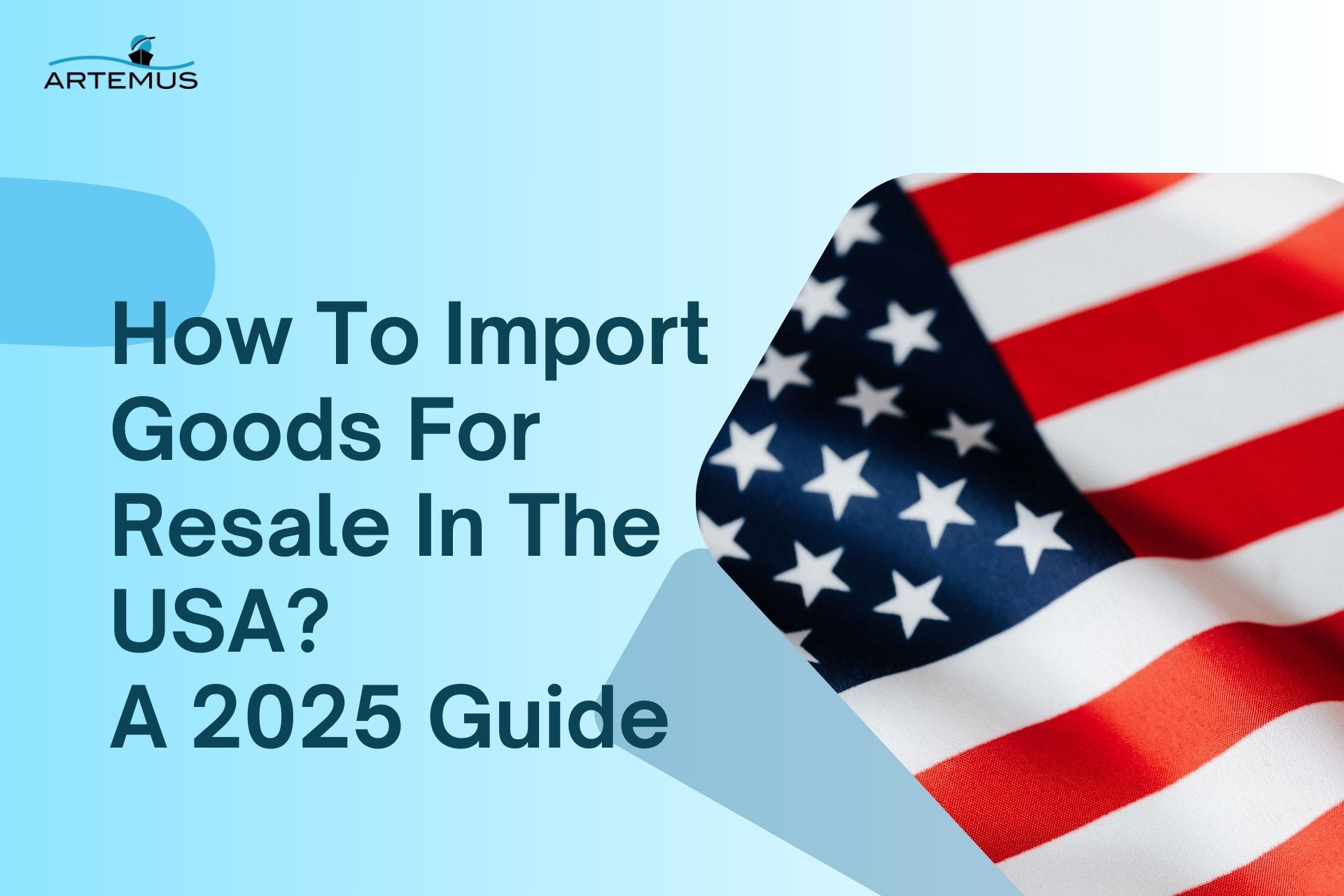
Importing goods for resale in the USA presents a lucrative business opportunity, but navigating the complexities of U.S. customs regulations,
Get In Touch
Artemus’ Software Solutions for ISF, AMS, Japan AFR, eManifest Canada, & Panama B2B filings.